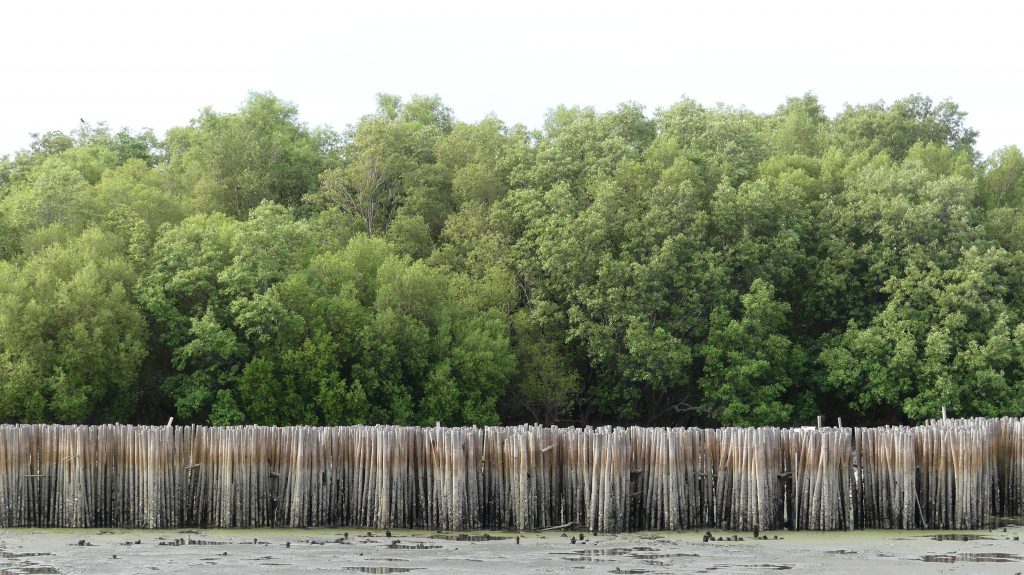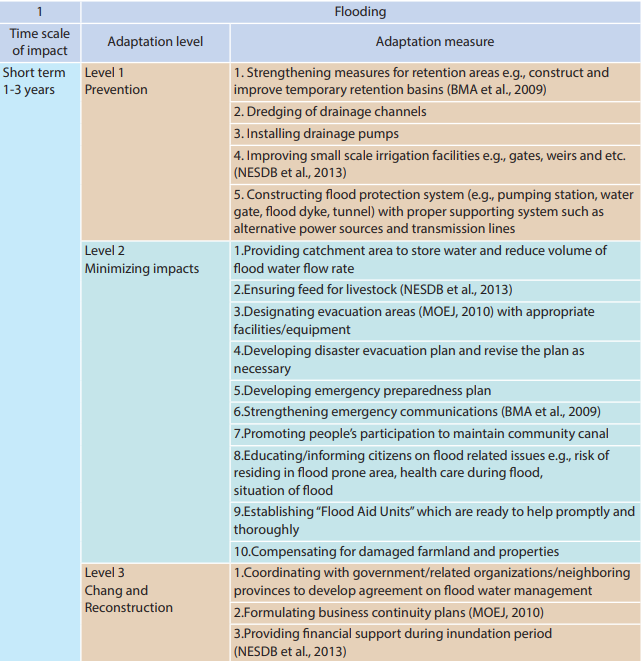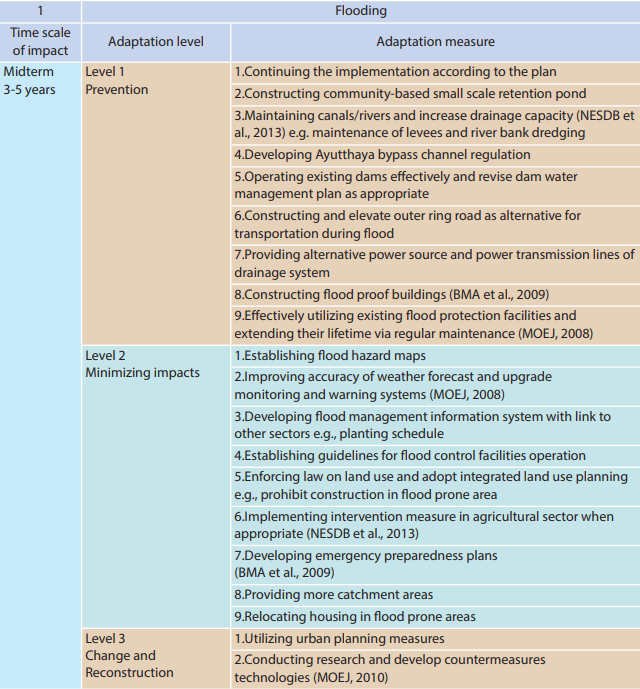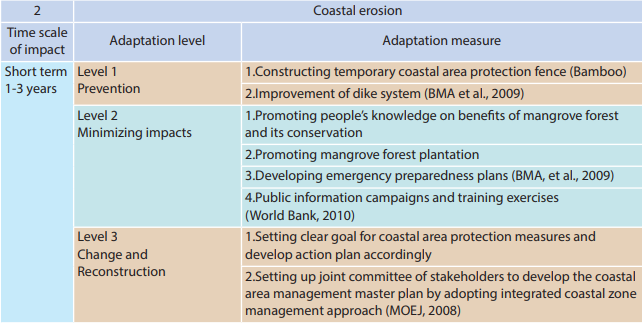Adaptation planning sector
Bangkok is situated on the floodplains of the Chao Phraya River and subjected to the tides of the sea which results in trapped water from rainfall (flooding) and subjected to the tides of the sea. Together with land subsidence problem arise from withdrawal of groundwater, the area trapped water from rainfall which then causes the overflow from the river. In addition, withdrawal of groundwater is also a cause of land subsidence in the area. It is expected that with climate change the vulnerability of Bangkok will increase in future, which may cause large scale of economic and social losses.
As one of the priority areas of adaptation measures, BMA will take short term (1-3 years), midterm (3-5 years) and long term (5-10years) of actions, to prevent, minimizing impacts, and change and construct infrastructures. As for adaptation measure, it includes expanding retention areas, developing flood management information system with link to other sectors such as a Bangkok flood hazard map, safe road constructions, development of a retention area, restored canal and drainage channel, stone dikes (groins) for Bangkhuntien coastal erosion protection, and mangrove reforestation, and so on.
Climate change adaptation planning requires different methodologies for evaluating the progress of work under the Master Plan, compared with 4 GHG mitigation sectors. The projects on adaptation planning are to be evaluated based on Baseline Indicators and Action/End Project indicators.

The goal by 2020 aiming at developing infrastructure for supporting response to climate change impacts by prioritizing vulnerabilities to disasters namely floods, coastal erosion and droughts.





